A solid introduction to Permaculture - self sustaining ecology
 Learn more about living in a greener, environmentally friendly and sustainable way.
Learn more about living in a greener, environmentally friendly and sustainable way.- Study the fundamentals in far greater depth than most permaculture courses.
- Understand the biological systems; and how the different parts of nature interact, before moving on to learn to actually design permaculture systems.
- A thorough starting point for learning about permaculture and studies towards a Permaculure Design Certificate. If you have limited time, an alternative is start with the Permaculture Systems course, and fast track your path to a PDC (Permaculture Design Certificate).
COURSE AIM
To develop the student’s understanding of how to plan and develop a self sustaining, environmentally stable productive garden based on the patterns which occur in nature.
WHAT IS PERMACULTURE?
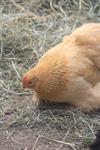 Permaculture means Permanent Agriculture. As the name reflects Permaculture is a philosophy and a practical approach to developing and designed sustainable human settlements. Permaculture brings together many different disciplines such as biology, agriculture, plants, animals, humans, ecology, soils, microclimates together to form a unique and visionary approach to many of our current global issues. Developed by Bill Mollison, permaculture is the way of the future and brings many timely answers to those searching for a better way to live.
Permaculture means Permanent Agriculture. As the name reflects Permaculture is a philosophy and a practical approach to developing and designed sustainable human settlements. Permaculture brings together many different disciplines such as biology, agriculture, plants, animals, humans, ecology, soils, microclimates together to form a unique and visionary approach to many of our current global issues. Developed by Bill Mollison, permaculture is the way of the future and brings many timely answers to those searching for a better way to live.
COURSE STRUCTURE AND CONTENTS
There are 5 lessons in this course:
Lesson 1. Permaculture Concepts
- Life Ethics
- Permaculture Defined
- Guiding Principles -relative location, multiple functions and elements, elevational planning, energy recycling, etc.
- Ideas and Techniques from around the world
- Natural Gardening
- Organic growing
- No dig gardening
- Crop rotation
- Biological control of pest and disease
- Integrated pest management
- Living things vary from place to place
- Understanding plant names
- An easier way to identify plants
- Pronunciation of plant names
Lesson 2. Understanding the Environment is Key to Permaculture Design
- Introduction
- Ecology
- Ecosystems
- Abiotic Components
- Biotic Components
- Ecological concepts
- The Web of Life
- Replicating Nature
- Successions
- Starting a Permaculture Property
- Cost, Location, Size
- Information required
- Structure of a Permaculture System
- Choosing a Site
- Permaculture Design
Lesson 3. Soils in Permaculture
- The Role of Soil
- Soil Components -gravel sand, silt, colloids
- Peds
- Naming a Soil
- Soil Management
- Cycles
- Fertiliser Application
- Nitrogen
- Factors Affecting Nitrogen Release from Organic Sources
- Microorganism population
- Heat and chemical treatment
- pH
- Soil temperature
- Cultivation and Cover Crops
- Drainage and Erosion
- How to Measure Soil pH
- How to Measure Organic Content of Soil
- How to Measure Water Content of Soil
- Determining Solubility of Soils
- How to Test the Affect of Lime on Soil
- Taking Soil Samples for Laboratory Tests
- Measuring Salinity
- Colourimetry
Lesson 4. Climate and Water in Permaculture
- Site Types
- Degree Days
- The Hydrological Cycle
- Infiltration
- Rainfall
- Evapouration
- Effective Rainfall
- Temperature
- Frosts
- Extreme Hazards
- Permaculture Microclimates
- The Greenhouse Effect
- Water and Plant Growth
- Climatic Influence on Production
- Frosts
- Climate Considerations for Fruit and Vegetable Production
- Climatic Zones
- Humans and Water
- Minimising Plant Requirements
- Household Water
- Xeriscaping
- Interpreting Weather Reports and Predictions
- Precipitation
- Wind
- Weather Maps
- Weather Map Patterns
- Interrelationships between Climate, Soil and Plants
- Estimating Water Requirements of Plants
- Ways to Improve Water Quality, from any Source
- Water Impurities - sediment, impurities, colour, chemical impurities
- Water Hardness
- Alkalinity
- Corrosion
- pH
- Iron
- Salinity
- Tastes and Odours in Water
- Biological Impurities in Water -algae, bacteria
- Other Water Chemistry Factors -dissolved gasses, nitrogen cycle
- Fish for Ponds
- Other Animals in Water
Lesson 5. Forest Systems
- Biomass
- Components of Biomass
- Plant Associations
- Pinus Monoculture
- Eucalyptus Association
- Deciduous Forest
- Alpine Communities
- Myrtaceae Plants
- Australian Legumes
- Rockeries
- Rain forest Systems
- Wind, Light and Rain in Forests
- Forest Productivity - fuel, food, forage, shelter belt, structural, conservation
- Establishment of a Forest
- Creating a Rain forest
- Maintenance and Upkeep of Forests
- Plant Application -trees, shrubs, ground covers
- A review of how to grow a variety of different plants for Permaculture
Each lesson is completed with an assignment which the student submits to the School. This is marked by the school's tutors and returned to the student with any relevant suggestions, comments, and if necessary, extra reading.
COURSE AIMS
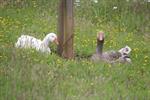 Discuss the nature and scope of Permaculture.
Discuss the nature and scope of Permaculture.- Apply an understanding of environmental systems to considerations given to how a Permaculture system is designed.
- Describe soils and the impact their characteristics have upon natural and man made environments.
- Explain the application of this knowledge to Permaculture.
- Describe characteristics of climate and water, and the impact their characteristics have on natural and man made environments.
- Explain the application of this knowledge to Permaculture.
- Describe forest systems and their relevance to Permaculture design.
WHAT YOU WILL DO
- Develop a good understanding of the scientific system of naming plants.
- Discuss some of the aspects which play a part in permaculture.
- Describe how permaculture is different to other forms of horticulture and agriculture.
- Visit an outdoor environment area determine what relationships the living and non-living things might have with each other.
- Explain how a permaculture system operates. Considering: Relative location; Multiple functions; Multiple elements; Elevational planning; Biological resources; Energy recycling; Natural succession; Maximise edges-Diversity.
- Determine some of the characteristics of soil samples collected by you.
- Explain contour maps and how this information can be used to estimate potential effects on plant growth.
- Explain the relationship between soils and plant growth.
- Research different ecosystems such as arid deserts, savannas, mangroves, etc.
- Explain weather patterns in your local area. Determine why this knowledge may be important to the permaculture practitionist.
- Explain water within an ecosystem or permaculture garden and its application.
- Describing the microclimate of arid classification.
- Describe the differences between the three main types of climate zones such as Tropical, Temperate and Desert and briefly give your views on what major differences would need to be taken in establishing a permaculture system in each climate zone, compared with the other two.
- Consider the impact of plant communities on each other and to the rest of the ecosystem.
- Determine the effects of light, rainfall, wind, leaf litter, etc, on the growth of the plants you observed.
- Explain the importance of trees in a Permaculture system.
Applying Lessons from Nature
 A big part of your permaculture education is to understand how plants and animals exist together. This involves learning about many different disciplines; from horticulture and agriculture to ecology, environmental science and climatology.
A big part of your permaculture education is to understand how plants and animals exist together. This involves learning about many different disciplines; from horticulture and agriculture to ecology, environmental science and climatology.
Areas of land which have been cleared and used by man, whether for farming, housing, or some other purpose, may through good permaculture design, be returned to a more natural condition (although it may be impossible to recreate the original ecosystem as it might have been if left undisturbed).
Some plants will grow well in association with certain species but not with others. When re establishing a natural environment in a previously disturbed area it is important to establish the right combination of plant varieties if the area is to remain stable and have the "self perpetuating" ability which a "real natural environment" has.
In order to re-vegetate an area successfully this way, it may be necessary to plant taller trees and allow them to establish properly before planting the lower growing plants as well as a vigorous weed control program to give your desired plant species a chance to establish.
Types of Plant Associations
There are many different types of plant associations and many different ways of categorising them. These include categories based on climate, for example warm temperate rainforest, cool temperate rainforest, alpine, arid etc; categories based on broad 'type' characteristics, for example deciduous forests, coniferous forests, wet or dry sclerophyll forests, grasslands etc: and categories based on individual plant genus or species, for example Eucalyptus, Pinus, Acacia, etc.
Examples of Plant Associations:
Pinus Monoculture
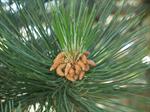
Pine trees (e.g. Pinus radiata) have a toxic chemical in their needles which discourages the growth of most other plants. When a pine plantation is young, other plant types may grow alongside the pines, but as they mature, most of the nearby plants will die, leaving a forest with very little growing other than the pines.
Eucalyptus Association
A eucalypt forest (or woodland) usually contains three types of plants:
- The Eucalypts (These are normally the tallest plants, and are called the "upper storey").
- Medium to tall plants (smaller than eucalypts) such as wattles.
- (These are called the "middle storey").
- Low shrubs and ground covers (called the "Lower storey").
This three layer concept is common in permaculture designs, although the plants chosen are generally more productive. It is referred to as "stacking' in permaculture articles. The stacking will enhance the key principle 'relative location'.
Deciduous Forest
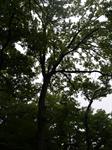 This type of forest is more common in the northern hemisphere. It may be created as a self perpetuating environment however in some situations, though it may not have originally occurred naturally there (e.g. Australia). Examples of possible situations are in gardens associated with European style buildings or in zoos or wildlife parks where animals deriving from such deciduous plant communities are kept. Often the deciduous species will also grow readily in association with evergreen species. In their natural environments this could be with coniferous species (conifers), or in Australia with Eucalypts. In some areas of Australia, particularly moist cool areas, deciduous species have become naturalised, often displacing native vegetation.
This type of forest is more common in the northern hemisphere. It may be created as a self perpetuating environment however in some situations, though it may not have originally occurred naturally there (e.g. Australia). Examples of possible situations are in gardens associated with European style buildings or in zoos or wildlife parks where animals deriving from such deciduous plant communities are kept. Often the deciduous species will also grow readily in association with evergreen species. In their natural environments this could be with coniferous species (conifers), or in Australia with Eucalypts. In some areas of Australia, particularly moist cool areas, deciduous species have become naturalised, often displacing native vegetation.
Generally for deciduous forests the upper storey is made up of deciduous trees such as Ash, Maple, Birch, Oaks or Elms. The lower plants may be deciduous or evergreen shrubs.
In permaculture, various fruit trees with deciduous habits can be utilised to increase productivity for the land. The above mentioned deciduous trees are not common in permaculture gardens.
Alpine Communities
These consist of plants adapted to either short or long term periods of cold and snow. In many cases these communities are found in high mountainous, often windswept areas. Examples of plant associations that may occur within this broad category are alpine grasslands where the predominant vegetation is low growing grasses, bulbs, herbs and annual flowers, or alpine moss fields consisting predominantly as the name implies of mosses.
Depending on the location of the site, alpine plants may need to be considered. Plants that exhibit multiple functions should be considered in the design.
Legumes
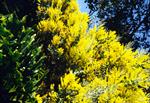
Legumes are those plants belonging to the plant families Mimosaceae, Fabaceae and Caesalpiniaceae. These families are well represented in Australia. Most plants in these families have small nodules on their roots containing bacteria that convert atmospheric nitrogen into a form suitable for use by the plant. This gives such plants the ability to enrich soils with nitrogen rather than impoverishing them. Legumes can be useful in this way in preparing soils for other plants or can be planted in conjunction with other species.
These legumes trees are used for stacking in permaculture designs. Forming the upper level, they provide a more protected understorey environment plus provide nitrogen into the soil.
OBTAINING A PERMACULTURE DESIGN CERTIFICATE
If you are interested in obtaining a Permaculture Design Certificate, then Permaculture I can make up your first step. For further details on how to achieve a PDC, and the different study options which we have available to you, please read the Permaculture Design Certificate article.
STUDENT TESTIMONIALS
"Thank you for your support and help with this course. I have really enjoyed the assignments and I have learned a lot about the principles of permaculture."
Ned, Permaculture course.
"This course was a valuable learning experience. My workplace is slowly changing to a 'greener' approach to managing every aspect of their parks, flowerbeds & trees. I'm trying to learn and find new ways to go 'greener' in the landscape as are many other individuals working in municipalities in Ontario. Your course provided me with a basic foundation to start and I'm looking forward to the rest of the Permaculture course. Feedback was very specific and easy to follow."
Bernice Radtke, Permaculture I course.
LEARN MORE
The Permaculture I course can be started at any time. You study by distance learning, with the help and support of our highly knowledgeable Permaculture tutors.
If you have any questions, or want to know more about the course or the options for studying for a Permaculture Design Certificate, then please get in touch with our specialist Permaculture tutors today. They will be pleased to hear from you.